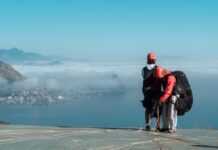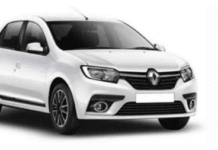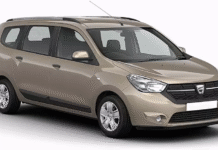The Everest Base Camp walk (EBC) is a grand trip and a tough one. You will walk deep into the core of the Himalayas, ready to meet: Rough, worn paths, 4,000 meters of non-stop walking, and A lone, harsh place. This is the trip of a lifetime, and you hope to face it fully prepared. That’s everything from a small, well-stocked first aid kit to some emergency numbers in case someone has a small mishap or comes down with a small health issue on the road.
Whether you’d be trekking on a guided Everest Base Camp Tour or doing it on your own, one thing you must never forget to carry along to all EBC trek packages is a first aid kit. This will be everything from one small, stacked first aid kit to the numbers to contact in an accident or if someone’s feeling a bit unwell on the road. Going to face: Uneven, well-trodden pathsTrekking 4000 meters upwardsDesolate conditions. The trip of a lifetime, and you want to be sure you’re as prepared as you can be. This will be things ranging from a small, well-stocked first aid kit to a few emergency numbers to call if someone has a small accident or succumbs to a small health problem on the road.
Everest Base Camp trek is a trek we recommend, whether you’re doing it yourself or are planning on a guided Everest Base Camp trek. You’ll want to be sure that one of our first aid kits is packed along with you on all treks. You also, by no means, will be near medical help with the touch of a button as you climb to higher elevations. So, it only makes sense to be prepared; to have your gear in order and know what to bring along to keep you safe, sound, and healthy.
In this article, though, we talk exactly about what to bring in a first aid kit for the Everest Base Camp Hike – including the crucial first aid items to bring with you to keep yourself healthy (and sane) on this awesome adventure.
Medications for common trekking ailments
Training for Everest Base Camp Preparing for Everest Base Camp If you’re doing a trek to Everest Base Camp, you are bound to feel a little (or a lot) of pain some of the time. And knowing which medications to bring can offer a small amount of reassurance when faced with these common maladies:
Pain: Pain relief for aches and sprains/aches and pain/fever, using ibuprofen or paracetamol. Those over-the-counter pain relievers also can help tamp down inflammation — a particularly sore subject when you are suffering from joint pain after weeks on the trail.
Altitude Sickness Drug Ganging up on everyone’s mind when they hear about the Everest Base Camp trek Itinerary, is altitude sickness scares. Be careful for signs like complications, feeling ill, being dizzy, and no longer being capable of breathing normally. Diamox (acetazolamide) is right for each stopping and assisting with altitude illness. If the height worries you, communicate with your medical doctor earlier than you go and earlier than you begin your hike to know if you may take care of it.
Anti-Nausea Tablets: Some anti-nausea tablets can help to settle your stomach if the bouncy road is making you feel queasy or if your body isn’t accustomed to the high altitude. I have a tiny pile of anti-nausea medication that can help get you through the day when you are sick.
Wound Care and Bandaging Essentials
While the trek to the base camp at Everest provides breathtaking vistas and physical challenge, you’d be hard pressed not to get cuts and scrapes — especially somewhere on raw, rocky ground. But have the right gear to close up wounds, and you can stay crutchless.
Band-Aids: convey a bunch of Band-Aids for tiny cuts, blisters, or small wounds. Blisters are certain to return on massive walks, just like the Everest Base Camp trek. It’s clever to have a few desirable call-emblem ones to care for your sores.
Gauze Pads and Tape: For bad cuts and scrapes, use gauze pads and tape to cover them well. This helps stop the bleeding and keeps the cut clean until you can see a doctor.
Injury Prevention and Support Gear
And so not only do you want one to and others to help heal wounds, it’s a good idea to carry some to avoid getting injured while on the trail. How much does it cost to trek to Everest Base Camp? MP These suggested prices may only include the basics of what you will need on the trek, soi’’ss best if you bring your equipment:
Additional Supplies for High Altitude
At altitude, you should also remember that the higher you climb on your Everest Base Camp trek, the more key it is to keep the body in balance. There are a few other gadgets that can also tackle high-altitude problems:
Sunscreen – the UV rays are stronger and more sinister at high altitude, and they are reflected off of snow/ice. And oh, don’t forget to bring with you a high SPF sunscreen to shield your skin against the harmful UV rays.
Lip Balm With SPF: Your lips are also more prone to sunburn and chapping at higher elevations. Keep them safe with a great broad-spectrum SPF lip balm.
Saline Nasal Spray: The air is incredibly dry in the mountains, and your nostrils may become very dry and cracked. Try this saline nasal spray – it will help moisten your nasal passage and take away those irritations.
Goggles or Glasses: Polarized sunglasses are critical for excluding glare and UV rays. It will also provide some level of protection from snow blindness (yes, that’s a thing).
Personal Hygiene and Comfort Items
Staying clean on the trail is key to your health. Small acts like preserving cleanliness and fending off any infections may not appear big; however, some primary cleaning gadgets can keep you feeling clean and free from germs!
Hand sanitizer: easy water might not be smooth to discover, so carry a small bottle of hand sanitizer. Using it may come to be as everyday as reaching into your bag before eating, the usage of the restroom, or on every occasion you experience the need to clean up.
Wet Wipes: One dry pack is never enough, so bring a pack of wet wipes to clean your hands and face (and well, everything) without access to water. They’re particularly good on long days when you’re low on refreshment.
Toilet Paper: You probably think this is a no-brainer, but you’ll be grateful for it as it’s a complete essential for the hike: many of the loos that you might use on the track are of the squat variety (and these bathrooms typically don’t have toilet paper). Portion your own into a zip-top bag.
Other Essentials to Consider
Finally, there are some odds and ends you might want to carry in case of emergency:
Thermometer: You might need to track whether you’re running a fever (a symptom of both infection and altitude sickness).
Summary: Get Ready for the Everest Base Camp Trek.
When you load up the Everest Base Camp trek first aid, you are not just loading stuff you think you need; you are preparing for the unexpected. The altitude and physical exertion of the climb can leave you vulnerable to all kinds of health issues. But armed with a well-stocked first aid kit, you can help things remain safe and under control.
Two, whether it be for the views or just the challenge of a lifetime – it’s nice to know you have the best first aid kit for EBC trekking, or the harder 3 Passes of Everest Trek for that matter, to help you sleep easy at night. Be prepared, be vigilant, nd make the best of your only opportunity to go on a life-changing trip to trek to Everest Base Camp.




